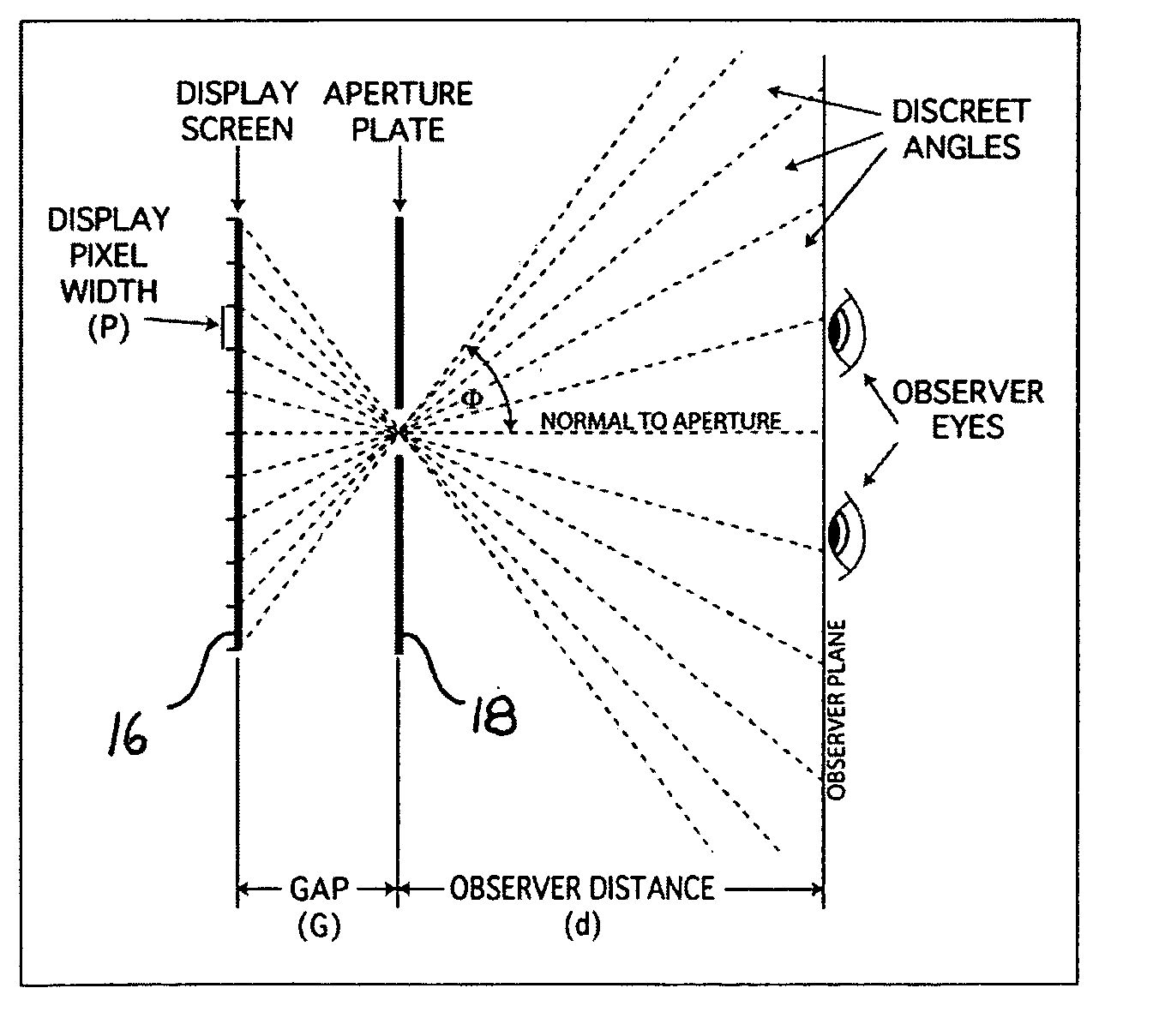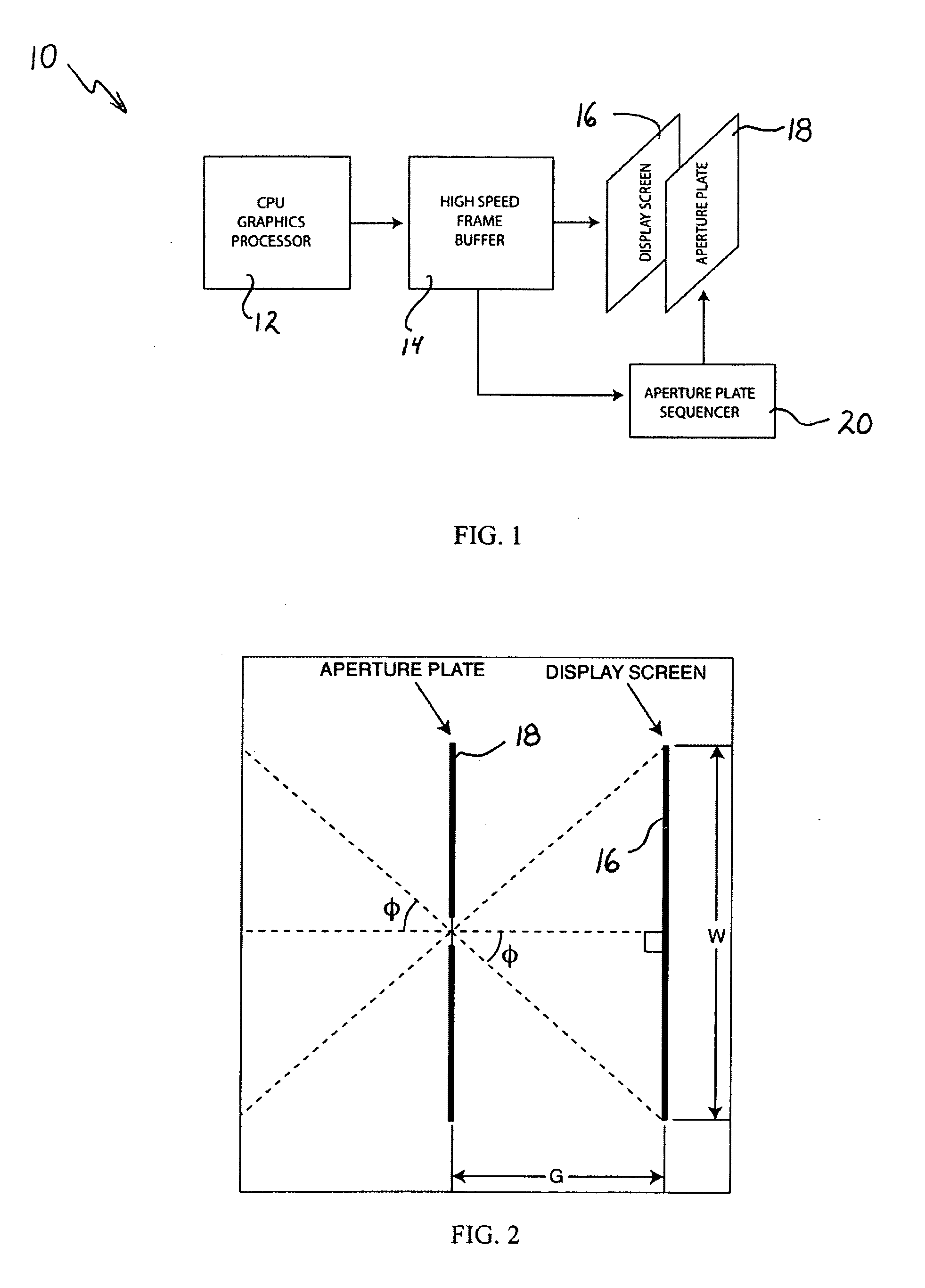Scanning aperture three dimensional display device
a three-dimensional display and scanning aperture technology, applied in the field of three-dimensional (3d) image reproduction, can solve the problems of affecting the viewing angle, the image becomes a little darker, and the ordinary computer display cannot be used for such applications, and achieves the effect of widening the viewing angl
- Summary
- Abstract
- Description
- Claims
- Application Information
AI Technical Summary
Problems solved by technology
Method used
Image
Examples
Embodiment Construction
[0048] Referring to the block diagram of FIG. 1, there is shown a general depiction of the scanning aperture three dimensional display system 10 according to an embodiment of the invention. In a basic form, the system includes a central processing unit / graphic processor 12, a high speed frame buffer 14, a display screen 16, an aperture plate 18 and an aperture plate sequencer 20.
[0049] The embodiment of FIG. 1 is a solid state example of the invention, having no moving parts. In accordance with various embodiments, described herein, the display screen 16, aperture plate 18, aperture plate sequencer 20 and other hardware / software components can be implemented in many different ways without departing from the spirit of the invention. In accordance with other embodiments, the apertures in the aperture plate 18 can be of different configuration. These embodiments are discussed in detail below, however a brief explanation of the operating principles and considerations in the implementat...
PUM
 Login to View More
Login to View More Abstract
Description
Claims
Application Information
 Login to View More
Login to View More - R&D
- Intellectual Property
- Life Sciences
- Materials
- Tech Scout
- Unparalleled Data Quality
- Higher Quality Content
- 60% Fewer Hallucinations
Browse by: Latest US Patents, China's latest patents, Technical Efficacy Thesaurus, Application Domain, Technology Topic, Popular Technical Reports.
© 2025 PatSnap. All rights reserved.Legal|Privacy policy|Modern Slavery Act Transparency Statement|Sitemap|About US| Contact US: help@patsnap.com



